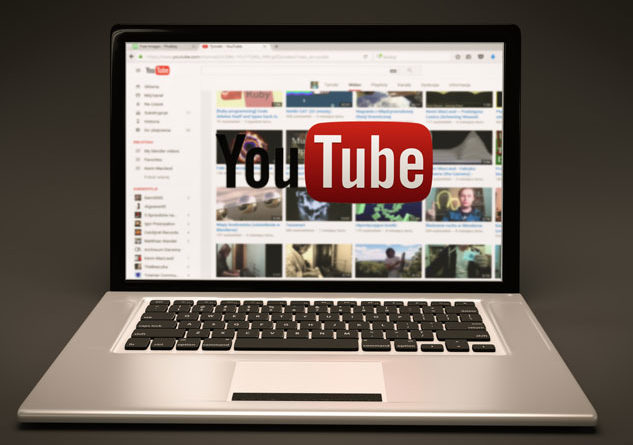Shelly Palmer
They say that if you ask the wrong question, you are guaranteed to get the wrong answer. Asked as, “Can YouTube ever be brand safe?” the answer is no. There is no possible way to make YouTube, or any environment that relies so heavily on user-generated content (UGC), 100 percent brand safe. Asked as, “Is YouTube safe for my brand?” is a better question, and it is the proper lens for any serious marketing discussion.
Before we get into what might be possible (assuming the government doesn’t get involved), I want to tell you exactly what is going to happen. Alphabet is a publicly traded, for-profit company. It has only one job: maximize shareholder value. And that is exactly what YouTube’s leadership team will be tasked to do. They will be given the resources needed to make YouTube as profitable as possible. If that happens to include making YouTube brand safe (or brand safer), great! If not, brands will be free to vote with their advertising dollars.
Targeting at Scale
YouTube has exceptionally large video audiences which you can very specifically target. If you want to put your message in front of every two-headed Martian who watches YouTube, enter your targeting parameters, choose a budget that fits your needs, sit back and enjoy.
There are other purveyors of digital and social video audiences you can target, such as Facebook, Twitter, Amazon, and Snapchat. BTW, I’m using two-headed Martians as a metaphor. In practice, you can describe your target audience with a high degree of granularity. If you know whom you want to reach, all of these platforms have solutions for you.
Brand Safety
The objective benchmark for what is, or is not, brand safe differs from advertiser to advertiser. In fact, it can vary from product to product. If I’m marketing an R-rated movie that is full of colorful metaphors, I may not be super-sensitive to a few expletives appearing in the adjacent UGC or professionally produced content. If I’m marketing a family movie, my tolerance for colorful metaphors, or violence, or anything deemed untoward in the adjacent content may be exactly zero.
If it were just this simple, it would already be fixed. And YouTube would not have been on the hot seat last week (really since 2015, when brands got mad about their ads appearing next to extremist video content).
The Deep, Dark Secret: Being a Little Off Brand Works
The problem with this issue is that the major players of the brand safety game – YouTube, and its advertisers, and their agencies – are not being completely honest with us or with each other.
In the real world, people live rich, full lives and enjoy many different kinds of conversations and language and entertainment. Humor is regional. Music is global. Curses and weird visuals that surprise and delight tend to find an audience. When you put it all together, if you really want to reach a gigantic audience, you are going to need to find audiences that look (from a data modeling perspective) like your best customers, and the opinions of people in the real world about what is, or is not, acceptable is a heterogeneous mix. If your target is too narrow, or if you are only interested in content that could play at 7 pm Sunday nights on an FCC-regulated television station, you are going to pave the way for your less squeamish competitors to destroy you.
Is YouTube a Platform or a Publisher?
This question has been asked several times in several different ways. If it’s a platform, it is not responsible for the content; its job is to provide a distribution mechanism for its users. If it is a publisher, it has a mandate to curate the content and to give its various channels a point of view. Should YouTube (and Facebook, Twitter, et al.) take responsibility for what is uploaded? It’s a topic worthy of Socratic debate. Congress may have that debate before we do.
Google Preferred
Google says, “By taking advantage of Google Preferred, brands get access to among the top 5% of content on YouTube, reach the highly coveted 18- to 34-year-old audience, and receive the measurement results they need to maximize the impact of their campaigns.” This sounds awesome, but there’s not much information available to the public about which channels are in the top 5 percent or what content is in those channels. That said, Google Preferred is on the right track.
Brand-Safe Zones on YouTube
If Alphabet (Google and YouTube’s parent company) wasn’t a for-profit, publicly traded company with a mission to create shareholder value, there would already be several brand-safe zones on YouTube.
It’s easy to do. You curate the content, monitor the comments, and promote the channels with the full faith and credit of Google. Presto change-o! You’re done. You now have a set of channels on YouTube that mimic FCC-regulated, brand-safe, broadcast network TV channels.
The problem is, that would no longer be YouTube; it would be FCC-regulated-style, brand-safe, broadcast network TV content distributed over the internet via YouTube. It might find an audience, but then again, it might not. The curation of the content and monitoring of comments would need to be AI assisted (good news for Google, because they’re great at AI). The cost of doing business would skyrocket and the resulting price of advertising might not produce an ROI commensurate with the investment.
More importantly, for the vast majority of people under the age of 30, YouTube is a brand – and it makes a promise. Watch, and we will inform, entertain, and enlighten you with content surfaced through the largest, most diverse social video platform in the world.
Can Technology Solve YouTube’s Brand Safety Issue?
The short answer is yes, with a qualifier. Google has the technological capability and the financial resources required to make YouTube 90-ish percent brand safe, maybe even 99-ish percent (it’s just a guess). But the bad guys (whoever they are) are motivated and will never go away. This will result in an enduring arms race between YouTube and the bad guys. No matter how good YouTube’s system is, on any given day the good guys will be ahead of the bad guys or vice versa.
Should YouTube get into a monumental game of Whack-a-Mole in the name of brand safety? Or should YouTube be what it is and let brands figure it out for themselves? Sergey? Larry? Susan? This one is in your court.
Author’s note: This is not a sponsored post. I am the author of this article and it expresses my own opinions. I am not, nor is my company, receiving compensation for it.
About Shelly Palmer
Named one of LinkedIn’s Top Voices in Technology, Shelly Palmer is CEO of The Palmer Group, a strategy, design and engineering firm focused at the nexus of technology, media and marketing. He is Fox 5 New York’s on-air tech and digital media expert, writes a weekly column for AdAge, and is a regular commentator on CNBC and CNN. Follow @shellypalmer or visit shellypalmer.com or subscribe to our daily email http://ow.ly/WsHcb






